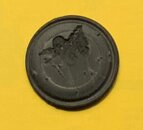CT-Rich
Contributor
This seems like a PIA solution to waste time and money. Just selling the old regulator is more work than paying to have it serviced. You sell it, you have to deal with some whiney bastard on eBay. You are going to buy the new regulators and have to configure them and make sure they are ready to dive. Are you buying them online? Are they out of the box ready to use and did you get the hoses you wanted or are you just using what was in the box?
If you don’t want to service them yourself, why not stagger them and service 1 set at a time? I don’t think you are going to find your plan convenient or cheap. You are going to have gear that is almost new and replace it with gear of unknown performance. If it arrives out of spec, you are going to spend money or time fixing it.
I would find someplace that will do the work properly and get good gear to start.
If you don’t want to service them yourself, why not stagger them and service 1 set at a time? I don’t think you are going to find your plan convenient or cheap. You are going to have gear that is almost new and replace it with gear of unknown performance. If it arrives out of spec, you are going to spend money or time fixing it.
I would find someplace that will do the work properly and get good gear to start.





